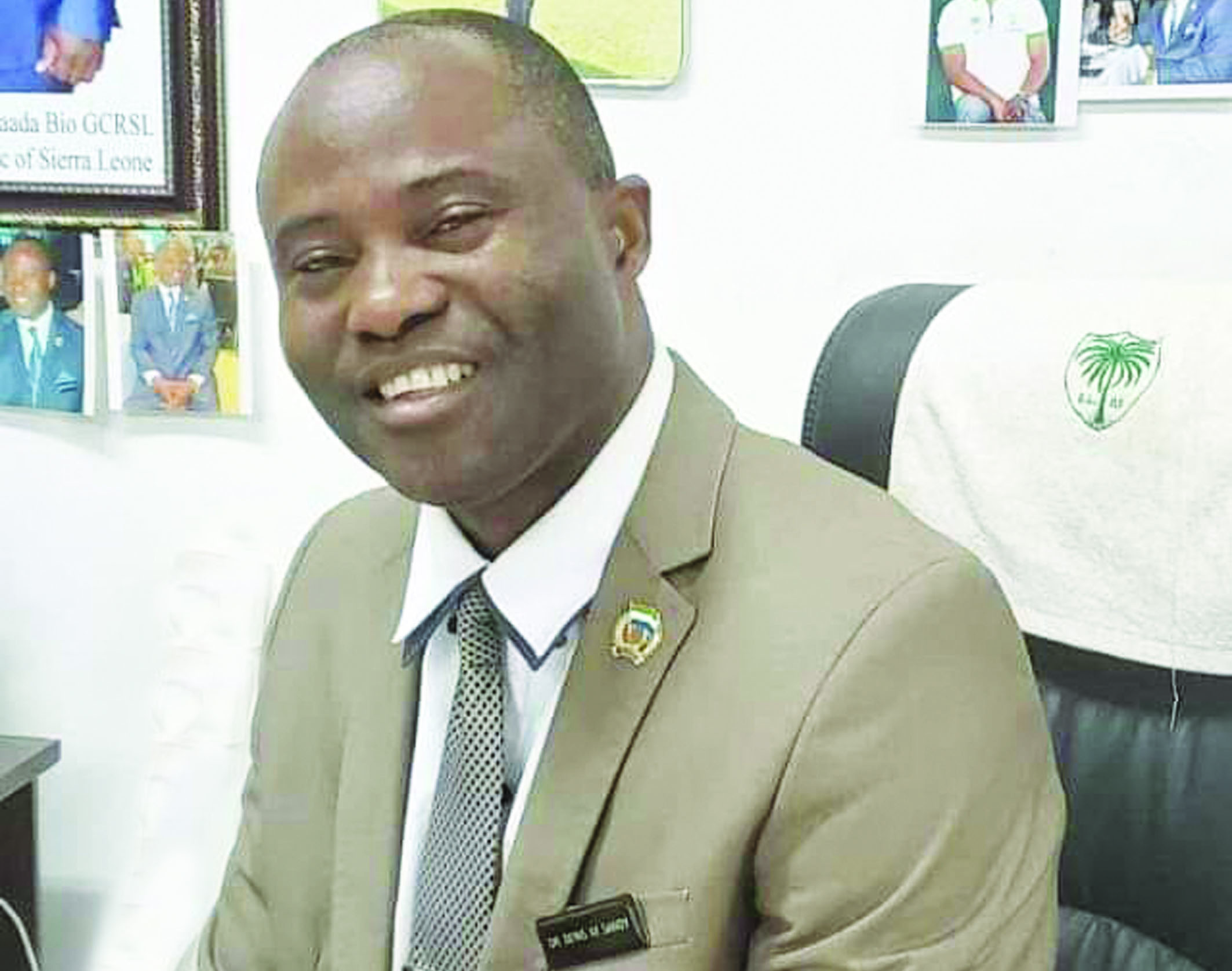Dr. Denis Sandy, an accomplished academic and Sierra Leone’s Minister of Works and Public Assets, is passionate about the developmental strides of President Julius Maada Bio’s administration. In this interview, he sheds light on the key infrastructure projects underway and how the Ministry’s development blueprint aligns with the strategic priorities of the country’s new National Development Plan. Excerpts:
What is the state of the infrastructure in Sierra Leone?
Sierra Leone’s infrastructure is still developing. The infrastructure sector has a broad scope; thus, the government’s infrastructure mission is divided across multiple ministries, including Works, Lands, Energy, Communication, Water Resources, and Transport, as well as their agencies. Let me begin with the mandate of the Ministry of Works and Public Assets.
The Ministry of Works and Public Assets is charged with the responsibility to design, coordinate, and monitor the implementation of policies and programmes for the development of physical and social infrastructure (buildings, roads) and the management of public assets.
In terms of road infrastructure, the government is upgrading and maintaining key trunk roads, urban and rural feeder roads, and transforming cable ferries into bridges. With respect to public buildings, the government is rehabilitating and expanding Lungi’s domestic airport, and constructing new modern buildings to take care of the increasing demand for office space.
What are some of Sierra Leone’s most pressing infrastructural problems?
Sierra Leone faces several pressing infrastructural challenges that have an impact on the country’s development. Some of the persistent infrastructural problems include inadequate road networks, especially in rural areas, which are hindering transportation and economic activities.
Poor road conditions and a lack of maintenance in some regions also make travel and the transportation of goods problematic. In addition, there are dilapidated and inadequate public buildings.
The government, private sector, and international partners are working together to address Sierra Leone’s infrastructural challenges through ongoing initiatives and future projects.
Does the government currently have any significant infrastructure projects underway?
Sierra Leone’s government has been engaged in various infrastructural projects aimed at addressing the country’s development needs. The government has been working on road construction and rehabilitation projects to improve transportation networks. The projects underway are the construction of the Lungi Bridge, the transformation of Cable Ferry Crossing Points into bridges, the construction of five regional markets, and the rehabilitation of Tikonko Junction (Kpetema Road), Buedu-Koindu Road, etc.
What is the state of the 8-kilometre Lungi Bridge project that will link the Lungi airport with Freetown, the nation’s capital?
Sierra Leone has signed a memorandum of understanding with China Road and Bridge Corporation (CRBC) and Atepa Group’s architectural firm to build an eight-kilometre (5-mile) bridge with an estimated cost of about $1.5 billion. The bridge will link the capital, Freetown, to the town of Lungi, an airport hub.
A feasibility study for the project is ongoing, and construction is expected to begin in the last quarter of 2024, with a three-year completion timeframe. However, the signing of this Lungi MOU with CRBC does not in any way prohibit other interested parties from expressing comparable interest, which will certainly be evaluated by the Government of Sierra Leone.
How would you rate the efforts made by your ministry to guarantee dependable and secure construction projects, a good road network, and efficient administration of public resources?
We can give a 4 out of 5 rating to our efforts to provide dependable and secure building projects, a strong road network, and efficient administration of public resources. The Ministry has made a good effort to ensure that projects are properly planned, designed, and organized for execution. Since project administration is an inter-sectoral activity, the challenges encountered are primarily the result of the actions and inactions of other sector participants, particularly those related to funding.
In line with the New Direction initiative, how do you plan to enhance infrastructure?
The government, through a number of measures, is enhancing infrastructure development in line with the Big Five game changers: Feed Salone, Human Capital Development, Youth Employment Scheme, Public Service Revampment, and Tech and Infrastructure.
We plan to create a strategic infrastructure development strategy to support the Big Five Game Changers, utilizing various funding sources to mitigate financial risks associated with large-scale infrastructure projects
We will explore various funding sources, such as international grants, loans, and development partnerships, to mitigate the financial risks associated with large-scale infrastructure projects.
We are exploring public-private partnerships (PPPs) as a potential method to attract private investment and expertise in infrastructure projects, thereby enhancing project delivery efficiency
The government is incorporating resilience planning into infrastructure projects, considering the potential impact of natural disasters and climate change. Our goal is to build infrastructure that can withstand shocks and contribute to long-term stability.
Equally, we aim to ensure the efficient planning, development, and maintenance of economic, effective, and efficient road and building infrastructure while promoting good standards in the construction industry.
The road transport of goods and people is vital to Sierra Leone’s economy. What initiatives is the government taking to make the national network better?
The government of Sierra Leone is implementing comprehensive transportation master plans to enhance the national network, ensuring it aligns with economic and social objectives.
We are exploring public-private partnerships (PPPs) to improve road transport, attract private investment, enhance efficiency, and share risks in infrastructure development.
Additionally, the government is enhancing road transport through regular maintenance programmes, the construction of all-weather roads, and the rehabilitation of feeder roads to ensure the longevity and quality of the national network.
A nation’s infrastructure development is essential to the expansion of its economic sectors and the nation as a whole. In the following five years, where do you envision the infrastructure sector in Sierra Leone?
Sierra Leone’s future infrastructure development is envisioned to facilitate the movement of goods and passengers quickly, easily, and affordably throughout the country, as well as provide adequate accommodation for government officials.


